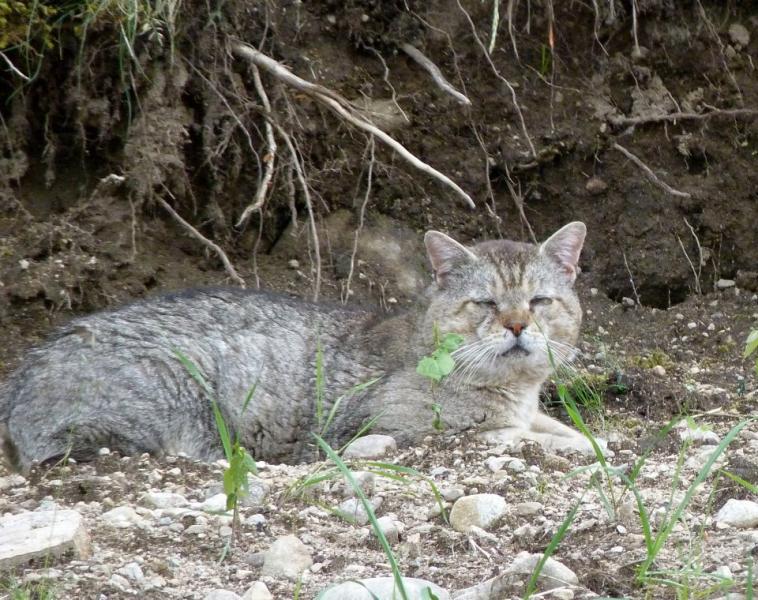KAAP is looking for local cat lovers/property owners who need a cat patrol for their nice warm barns. KAAP has some kittens and cats available for adoption who are not happy living in homes, and would make wonderful barn cats.
Kootenay Animal Assistance Program Society (KAAP) is pleased to announce a brand new program to help find suitable homes for the area’s feral and semi-feral cat populations. We are looking for cat lovers who have a barn or other secure outdoor structure, and are interested in adopting cats not suitable for life inside of a house or are unhappy living inside. Cat temperaments range from feral to friendly. This program is designed to find homes for cats that have traditionally been deemed un-adoptable through “normal” adoption procedures. If you have a safe, warm barn and would like to adopt barn cats, please call us at 250-551-1053.
How Barn cats can help you:
Barn cats benefit their caretakers! Supporting a barn cat is the safest way to control the rodent population in your barn. There are no poisons for children and pets to get into and no need to set nasty traps. They will help keep rodents away from grain and food storage areas, and you’ll enjoy watching the cats as well as have the satisfaction of giving them a much needed home!
How the Barn Cat Program works:
Contacting us is the first step to adopting. A KAAP volunteer will then visit the proposed location to ensure it will provide suitable shelter. When we have Barn Cats for you, you will be asked to sign an Adoption Contract.
Cats that are placed into our Barn Cat Program fall under three main categories:
- Cats whose litter box habits are not consistent enough to be inside only cats and/or who have lived or spent time outside per their previous owner.
- Cats who were found as strays, and who may be too independent to appreciate living in a house.
- Cats who are shy/fearful of people, and prefer the company of other cats and animals.
We will not place cats who are best suited to be house pets and we won’t place kittens under age 4 months as barn cats, unless they are feral/semi-feral without hope of becoming socialized. (This “may” be waived on a case-by-case basis.) A minimum of TWO cats must be placed at the same location at the same time. We will determine if the cats can peacefully co-exist prior to placement. (Due to the nature of the program, we may not have suitable cats available immediately, but will try to fill your request as soon as possible. We will maintain a waiting list, as the number of cats available as candidates for the Barn Cat Program will fluctuate.)
What Will You Provide?
- A warm, secure, dry barn or building in which the cats can live out their lives.
- A donation to cover the cost of the spay ($120) or neuter ($70) surgery. Some people also want to have their cats vaccinated ($60).
- The commitment and ability to keep the cats confined to a crate or exercise pen with a wire top for up to four weeks (depends on the cats and the barn) to acclimate them to their new environment before release.
- A clean litter box that is scooped and/or cleaned daily while confined.
- A constant supply of dry food and fresh water. While confined and for a short while after release, you will provide a small amount of canned food daily. What cat can resist that?
- Monitoring and providing for the safety and well-being of the cats as their caretakers.
- The willingness to trap and vaccinate the cats once every three years, and to provide licensed veterinary care in the event of a severe injury or illness.
- Spending time daily making verbal contact with the cats so that they become familiar with you.
What will KAAP provide?
- All cats will be in good health and have had a brief, general exam by a vet
- All cats will be spayed or neutered prior to placement
- All cats will be vaccinated against Feline Leukemia and rabies
- All cats will be examined and treated for fleas and ear mites prior to placement
- KAAP will provide a secure extra-large crate/cage for confinement of barn cats for up to four weeks, if needed.
- KAAP will deliver and set up the cats in their new environment and will provide detailed instructions on safely confining, releasing and maintaining the barn cats.
- We will work with you to determine the best location for the crate/cage.
Will there be a cost to you?
The adoption fee for two fully vaccinated, spayed, and neutered cats/kittens is voluntary donation to KAAP’s spay/neuter fund. Your donation will help offset the approx. $200 per cat cost to KAAP. We suggest that you cover the spay ($120) or Neuter ($70) surgeries.
Why two cats?
Other Barn Cat Programs recommend that at least two cats always be moved together. They should be cats that have formed a bond or at least get along with each other. The move will be less traumatic and adjustment to their new home easier if they have the security of one or more trusted companions.
Why do they have to be confined for the first 2-4 weeks?
How are the cats confined?
KAAP will provide the adopter with an extra-large dog crate/cage. We will also provide a small, plastic crate that will be placed inside and to the back of the larger enclosure. This provides a hiding place for the cats. These items will be returned to KAAP at the end of the confinement period. The cats will be provided with: a litter box, which need to be scooped or cleaned daily; dry food and fresh water at all times; and a portion of canned food every day. It is recommended that a portion of the cage/crate be covered with a sheet. This will allow the cats to feel more protected and “hidden”.
In winter, the small crate should be bedded with thick towels, or straw. Additionally, the caregiver may wish to place bales of straw around the enclosure to help maintain warmth for the confined cats. During spells of freezing weather, the caretaker must be sure to give fresh water throughout the day as the cat’s water becomes frozen. There are various devices available to keep water from freezing. We can provide sites where these can be purchased. In summer, proper ventilation is vital to prevent overheating. Cats can and do become overheated.
What happens after the confinement period?
It’s best to close all doors and windows in the barn, open the cage door in the evening, then leave. The cats will want to explore their new surroundings all night, as they are nocturnal. By morning they will have found good hiding places, although they may prefer the security of their cage. You can ease the transition by continuing to place their food and water in the cage for a few days with the door open. You will need to continue providing daily food and water after the cage is removed. Cats are territorial creatures. They will usually maintain a home base once their scent has been established, a continuous food source is provided, and they feel safe.
DO NOT RELEASE IF IT IS RAINING or the POTENTIAL FOR RAIN – Cats find their home by scent and rain will wash it away. Waiting one more day will not hurt. Leave the cages up for an additional five days, so the cats can get back in if they want. After the release, we hope they think of that barn as home and decide to stay.
What if the cats don’t like their new home?
They will like the regular food and water you provide (cats cannot live on just mice). They may even begin to show affection. The key to success will be your patience while they adapt to the sights, sounds and smells of their new surroundings. Continue to speak softly to them, try hand feeding treats, and leave a radio on to help them get used to human talking and singing.
ABOUT FERAL CATS:
A feral cat is not socialized to humans.
Either she was born outside and never lived with humans, or she is a companion cat who has strayed from home and over time has become unsocialized to humans.
Feral cats should not be taken to animal control pounds and shelters.
Feral cats’ needs are not met by the current animal control and shelter system. Feral cats live outside, but are killed in shelters. Even no-kill shelters are not able to place feral cats in homes.
Feral kittens can be adopted.
Feral kittens can often be adopted into homes, but they must be socialized at an early age. This is a critical window, and if they aren’t handled in time, they will remain feral and therefore unadoptable.
Feral cats can have the same lifespan as companion cats.And they are just as healthy, too. The incidence of disease in feral cats is just as low as in companion cats. They live healthy, natural lives on their own, content in their outdoor home.
Humans are the cause of wildlife depletion.
Studies show that the overwhelming cause of wildlife depletion is destruction of natural habitat due to man-made structures, chemical pollution, pesticides, and drought – not feral cats.
“Catch and kill” doesn’t work.
It is an endless, cruel cycle and is extremely costly to taxpayers. Cats choose to reside in locations for a reason: there is a food source (intended or not) and shelter. When cats are removed from a location, survivors breed to capacity or new cats move in. This “vacuum effect” is well documented.
Trap-Neuter-Return does work.
No more kittens. Their numbers gradually go down and their lives are improved. The behaviours and stresses associated with mating, such as yowling or fighting, stop. The cats are also vaccinated. This program creates a safety net for both the cats and the community.
- Cats need to be confined initially in their new home for at least two to four weeks in order to familiarize the cats with their new environment, so that they will remain on the premises. Even though there are instances of cats remaining when they have escaped upon arrival, this is rare and most cats will take off, never to be seen again.
- Other than being dangerous for the cat, this can be traumatic for the caregiver who has usually put a lot of time, energy, money, and care into the cat.
- Some people see confinement as cruel, but a short confinement period is a very necessary part of the relocation project.
- Not confining the cats and having them run off could mean a far worse fate for the cats. You should know that during the first day or two, the cats may struggle to find a way out. Most cats settle down in the cage after a day or two when they realize that no harm will befall them.

